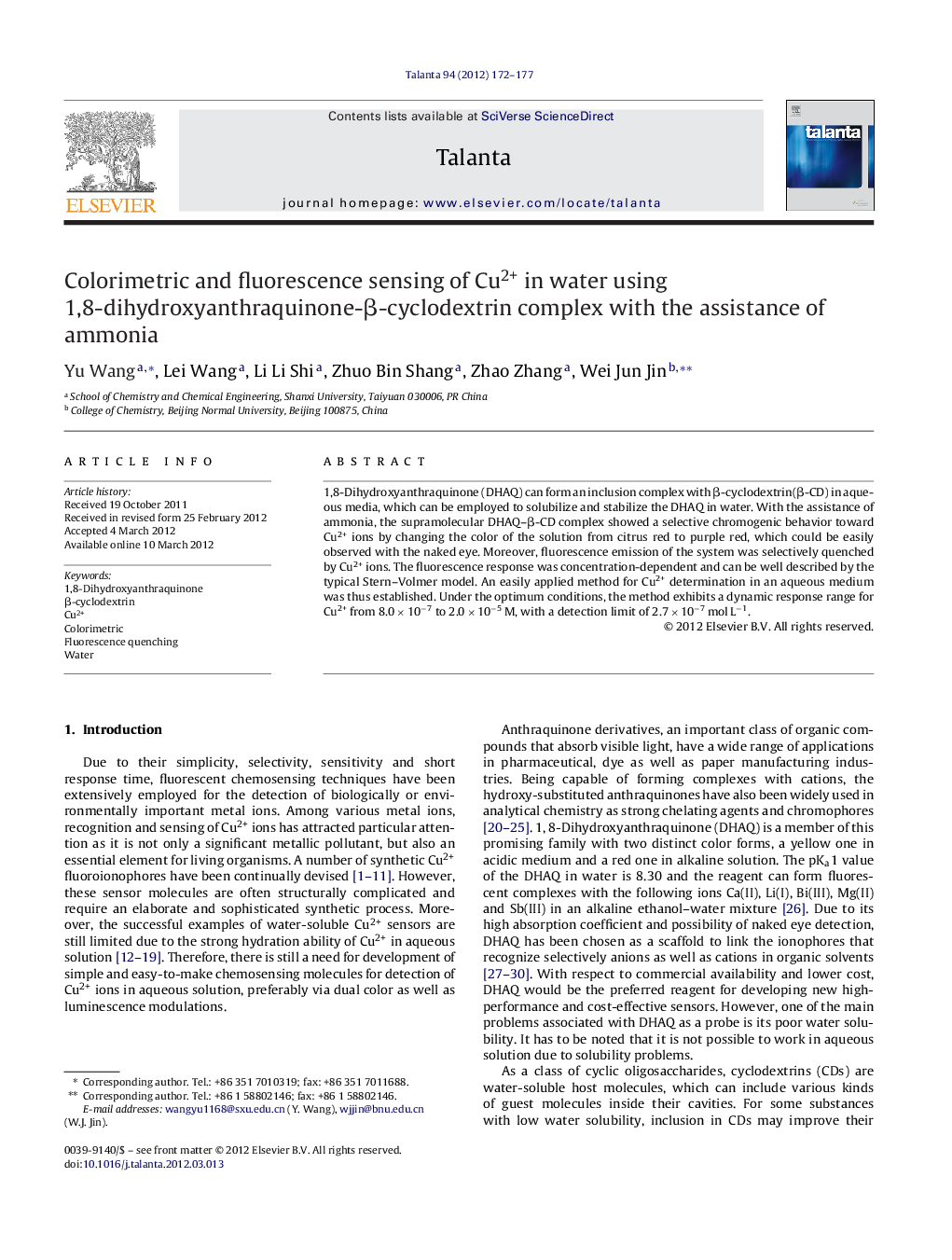| Article ID | Journal | Published Year | Pages | File Type |
|---|---|---|---|---|
| 1245631 | Talanta | 2012 | 6 Pages |
1,8-Dihydroxyanthraquinone (DHAQ) can form an inclusion complex with β-cyclodextrin(β-CD) in aqueous media, which can be employed to solubilize and stabilize the DHAQ in water. With the assistance of ammonia, the supramolecular DHAQ–β-CD complex showed a selective chromogenic behavior toward Cu2+ ions by changing the color of the solution from citrus red to purple red, which could be easily observed with the naked eye. Moreover, fluorescence emission of the system was selectively quenched by Cu2+ ions. The fluorescence response was concentration-dependent and can be well described by the typical Stern–Volmer model. An easily applied method for Cu2+ determination in an aqueous medium was thus established. Under the optimum conditions, the method exhibits a dynamic response range for Cu2+ from 8.0 × 10−7 to 2.0 × 10−5 M, with a detection limit of 2.7 × 10−7 mol L−1.
► A new approach for the determination of Cu2+ in aqueous solution is reported. ► 1,8-Dihydroxyanthraquinone was used as the probe with the assistance of ammonia. ► The sensor exhibits both color change and fluorescence quenching effect for Cu2+. ► The sensor was applied in the determination of Cu2+ in water and tea samples.
